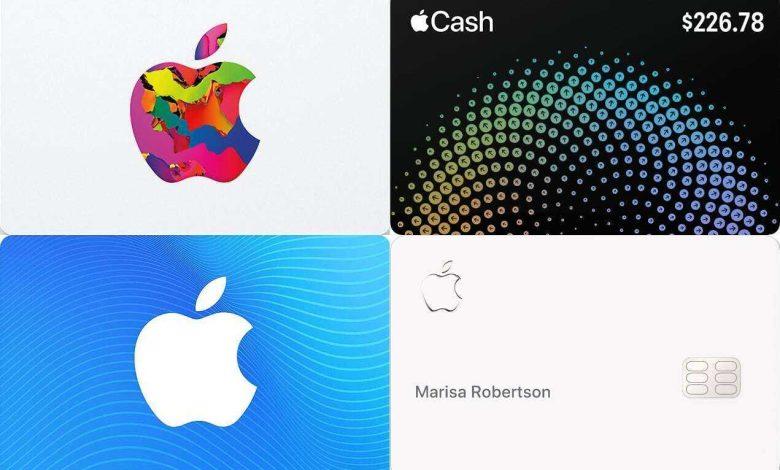What’s the Difference Between Apple Pay, Apple Cash and Apple Card?
Apple Card vs. Apple Pay vs. Apple Cash - How They Stack Up - Tons of Cards Reviews

Good morning, afternoon or evening (depending on where you are in the world), and welcome to this 8-10 minute article about Apple’s new services for their platform. I’ve already mentioned them during a recent presentation of mine that was done at one of the biggest Apple community events, hosted by MacMagazine. I’m not going to explain what these services are all about in general, as many articles were already written on this matter by fellow bloggers and friends from other communities. Instead, my goal is to compare the three to make a difference between each service available (Apple Card, Apple Pay and Apple Cash) based on how they work , who can use them , privacy & security concerns which are costs, benefits and more.
Goodbye Plastic Cards: Apple Launches New Credit Card Service – Here’s How it Works
An easy way to split these three services into two categories would be “productivity tools” and “cashless payment flow.” The former are all about using existing methods (like Apple Pay) in a better way, while the latter (Apple Cash and Apple Card) introduce new ways of working with money. When combined together, they can make things a lot easier to manage. Speaking of that… The biggest question I personally ask myself when it comes to Apple products is always: do I really need this? In many cases there are other substitutes or alternatives, and although this can be true in most of the services that Apple provides (I’m thinking of iCloud storage or Apple Music), these two are not always the case. In other words, you don’t need to use Apple Cash if you already have a debit card on your iPhone, but it’s definitely nice if you want to transfer money from one phone to another. Or maybe you do need something like Apple Card if your credit card bills might cause some trouble down the road? The answer is: it depends on your situation. Let me explain each service in detail to make things more clear for you.
Apple Cash
Apple Cash Introducing new ways of paying… using old ones! One thing I’ve realized after getting my brand new shiny Apple Watch, and after Apple Cash was introduced not long ago, is that you can actually run out of battery faster than money when it comes to this newish service. Basically, Apple Cash allows users to transfer money from one phone to another, just like you would do with cash for the first time in your life (okay, maybe I’m exaggerating here). By using AirDrop, which works on iOS 13 and up or MacOS Catalina 10.15 (and later), you’ll be able to send cash by providing your personal information or an amount of money through Messages app or Siri shortcuts. And yes, even though there are some rumors about Apple Pay being “dead”, and now Apple Cash as well – are made securely but still require a phone number, this is not always the case. On my Apple Watch (series 4) and across older iPhones, for example, I have both cards running without any problems whatsoever. You can find more information about Apple Cash over here: Everything you need to know about Apple Pay Cash
Apple Card
Apple Card According to their official website , Apple Card – a physical credit card from Goldman Sachs issued in partnership with Mastercard – was made to make it easier for everyone (especially iPhone users) to manage their finances by providing them with an easy way of tracking purchases and payments. This service also includes low-interest rate financing on all products using the card in US dollars, including shipping costs and other fees charged by merchants. Since interest rates usually go up if you don’t pay back your credit card bills in time, Apple has included a feature called Daily Cash that allows you to spend what you’ve earned with zero interest at all, and only if you make the payment back on time. In other words, this is another productivity tool made by Apple. You don’t need Apple Card to use Apple Pay or Apple Cash since the former works exactly like any other point-of-sale (POS) terminal or NFC reader, while the latter can be used even if you don’t have an iPhone but just money for a transaction – as they say, it’s like magic! This way of using money is actually very efficient when it comes to saving some cash… In fact: did you know that there’s no need to pay back your credit card bill in full every month? In most cases (especially if you have a stable income) it’s possible to just pay the interest applied and even carry some balance forward. Plus, Apple Card can also be used as a personal loan… It’s so easy that you might actually not want to use cash ever again.
Apple Pay
Apple Pay This is probably one of the best features introduced by Apple with its iPhone devices, which allowed users around the world to make payments using their phones or watches almost anywhere – including physical locations, online shops and apps supporting NFC readers. Sure, there are plenty other services on the market working in this way (Samsung Pay and Google Pay for example), but Apple has always had things under control thanks to their “closed ecosystem” policy. This means that, if you wanted to get a new phone or watch from Apple (for example, the latest iPhone XR ), updates for all services supported by Apple devices will arrive as soon as they’re released – no middle man of third party companies involved. When it comes to paying in physical stores around the world using a credit card or debit card, Apple has actually included two different ways: contactless payment using NFC reader and regular checkout through an online shop. Since there’s been some rumors about Apple Pay being deprecated recently, I thought about looking for some information about this topic on Google and found out that even though there are some POS systems that do not cards with embedded chips, most of them do and Apple Pay will work with them. As I said before, a phone number is not needed for Apple Cash – which means that this service will still remain active even if you lose your iPhone or other Apple device!
Payments Using Your Apple Devices
As soon as the iPhone 5 was released in 2012, there has been an option of using iPhones or iPads to make payments anywhere where NFC readers were available (and nowadays pretty much every phone out there also supports contactless payment). And if not, all users had to so was drag down the notification center and double click on the Touch ID button (or enter their password) and then place their finger over it. This way any transaction could be authorized by Apple without opening the Wallet app or entering passwords into an online shop – just like you would be paying with Apple Cash! So, what’s the difference between Apple Pay and Apple Cash? Well, the first one is a service that allows making payments using an iPhone or other devices (like a smartwatch) where NFC readers are available. As I said above, it doesn’t matter if there’s no online shop or POS system accepting contactless payment – users will just need to open Wallet or scan their fingerprint on Touch ID and use their phone/device to pay for something. The second one requires using at least an iOS device in order for transactions to be made – this means that even if you don’t have access to any of your Apple devices (say, if someone stole it/it got broken), you can still pay for things with a PIN code or by using Apple Pay Cash.
Formally known as “iSend” is Not What Some Expected
Apple Cash As Apple was calling this service “iSend” before it was released, most people expected the company to allow payments between different accounts through something like PayPal. Some people were really disappointed when they learned that Apple Cash is not such a thing at all, instead, what Apple decided to do was link customers’ debit/credit card numbers to their device’s contactless payment (or Touch ID) or Wallet apps and allowing them to use it for making online as well as offline transactions. If someone wanted to get some money from you, they would have to send an email asking for it, but since this can only be done among Apple users registered in the same country. Apple Cash is also available as an iMessage app. So, when someone wants to send you some money using this service, they will just need to open the Messages and choose Apple Cash from the left side menu – then all they have to do is type your name and mention how much money they want to send!
Apple Wallet As most of us already know, before Apple introduced their own online wallet system (which was named Passbook when it arrived) there was Google Wallet , which allowed making purchases at shops using only NFC readers just like Apple Pay does today. Nowadays both services are working pretty much in the same way, but there are a few differences one needs to know about in order to decide which wallet can better suit his/her needs.
1. Apple Wallet and Google Wallet both come with a built-in identification system that allows users to save credit card information (without the need of typing numbers manually or taking pictures of them). This means that whenever you make a purchase at shops accepting Apple Pay or Google Wallet, your phone will automatically identify yourself without asking for any PINs or passwords – just remove your iPhone from your pocket, run it over an NFC reader and voila! Payment is done! Although both services seem very similar on the surface level, they allow using different built-in systems so each of these requires keeping track of different balances (Google Wallet uses a balance reflected by how much money you have on your Google account, while Apple Wallet lets users link their bank card to it – this way users don’t have to keep track of two or more accounts).
2. Another difference between the two wallets is that since Apple Wallet syncs all your financial data to your iCloud account (meaning that you can use it from any iPhone, iPad and Macbook), there’s less need for having additional apps running in order to manage Apple Pay Cash . On other hand, having multiple “wallets” would make things easier for those who want to know exactly where they’re spending their money. Not everyone wants their parents or friends noticing how much do they spend at certain shops…
3. Although using Apple Wallet to make purchases at shops that accept Apple Pay is pretty much the same as using Google Wallet for doing so, there’s one huge difference between these two systems – when you pay with an iPhone or an iPad running iOS 11 and above, your device will automatically identify itself whenever you unlock it or run it over an NFC reader. If someone else takes the phone (just like in a physical store), they won’t be able to make any payments without knowing the PIN…
4. And last but not least, one of the main differences between these two services is that Apple Wallet only works on devices released by Apple! If users want to use this service they have to buy all of their gadgets from them too. On contrary, anyone can download the Google Wallet app and be able to use it with their Android phone.

